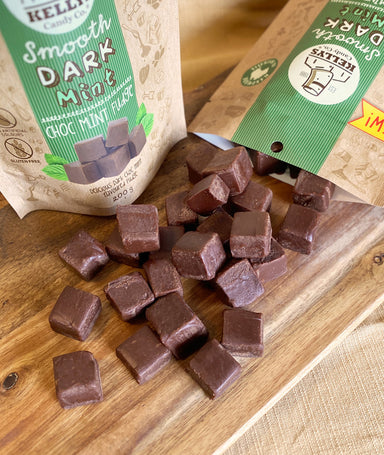Some Known Details About I Luv Candi
Table of ContentsUnknown Facts About I Luv CandiSome Of I Luv CandiExamine This Report about I Luv CandiThe Only Guide to I Luv CandiI Luv Candi Can Be Fun For Everyone
You can additionally approximate your very own profits by using various assumptions with our economic prepare for a sweet-shop. Typical regular monthly income: $2,000 This kind of sweet-shop is commonly a small, family-run business, possibly recognized to residents however not bring in multitudes of travelers or passersby. The shop may supply a choice of usual sweets and a few homemade treats.
The store does not usually bring uncommon or costly things, concentrating rather on cost effective deals with in order to maintain regular sales. Thinking an average costs of $5 per customer and around 400 customers each month, the month-to-month income for this candy shop would be roughly. Typical month-to-month profits: $20,000 This sweet store benefits from its critical area in a hectic city area, attracting a large number of consumers searching for pleasant indulgences as they shop.

In enhancement to its varied sweet option, this store might also market relevant products like gift baskets, sweet bouquets, and uniqueness things, offering several income streams. The shop's location needs a higher allocate lease and staffing however causes greater sales volume. With an estimated average spending of $10 per client and about 2,000 customers monthly, this store could produce.
Some Known Factual Statements About I Luv Candi
Located in a major city and vacationer destination, it's a big establishment, usually spread over multiple floorings and potentially component of a national or international chain. The shop provides a tremendous range of sweets, including special and limited-edition things, and goods like top quality garments and devices. It's not just a shop; it's a destination.
The operational costs for this kind of shop are considerable due to the area, size, staff, and features offered. Thinking a typical acquisition of $20 per consumer and around 2,500 customers per month, this flagship store could accomplish.
Classification Instances of Expenditures Average Month-to-month Expense (Array in $) Tips to Lower Expenditures Rental Fee and Utilities Shop rent, electrical power, water, gas $1,500 - $3,500 Think about a smaller area, discuss rent, and use energy-efficient lighting and home appliances. Inventory Candy, treats, packaging products $2,000 - $5,000 Optimize supply administration to lower waste and track preferred items to prevent overstocking.
10 Easy Facts About I Luv Candi Described
Advertising And Marketing and Advertising Printed products, on-line advertisements, promotions $500 - $1,500 Emphasis on cost-efficient digital advertising and utilize social networks systems free of cost promotion. Insurance policy Business liability insurance $100 - $300 Search for competitive insurance coverage prices and take into consideration bundling plans. Tools and Upkeep Cash registers, show shelves, repair services $200 - $600 Buy pre-owned devices when feasible and do normal upkeep to expand equipment life expectancy.

This means that the candy shop has actually gotten to a point where it covers all its repaired expenses and starts generating income, we call it the breakeven factor. Take into consideration an example of a candy store where the month-to-month set costs commonly amount to roughly $10,000. A rough estimate for the breakeven factor of a sweet-shop, would then be around (since it's the total set expense to cover), or offering between with a cost series of $2 to $3.33 each.
Little Known Facts About I Luv Candi.
A large, well-located additional resources sweet-shop would undoubtedly have a higher breakeven point than a tiny store that does not need much income to cover their expenses. Interested about the productivity of your candy shop? Try our user-friendly economic plan crafted for sweet stores. Just input your very own assumptions, and it will aid you calculate the quantity you require to make in order to run a lucrative service - carobana.
An additional threat is competition from other sweet-shop or bigger merchants that could offer a larger range of items at reduced prices (https://www.4shared.com/u/UqU86l4N/iluvcandiau.html). Seasonal changes in need, like a decrease in sales after vacations, can likewise influence success. In addition, changing customer choices for healthier snacks or dietary limitations can reduce the charm of typical candies
Finally, financial downturns that reduce customer investing can affect sweet-shop sales and productivity, making it important for candy shops to manage their costs and adjust to transforming market problems to stay lucrative. These dangers are often included in the SWOT analysis for a sweet-shop. Gross margins and net margins are essential indicators used to evaluate the success of a candy store company.
Get This Report about I Luv Candi
Essentially, it's the profit continuing to be after subtracting prices straight pertaining to the candy stock, such as acquisition prices from providers, production expenses (if the sweets are homemade), and team wages for those associated with manufacturing or sales. https://justpaste.it/5ahap. Net margin, alternatively, consider all the costs the sweet-shop incurs, including indirect prices like administrative expenses, advertising and marketing, lease, and taxes
Candy stores normally have an average gross margin.For instance, if your sweet shop earns $15,000 per month, your gross revenue would certainly be roughly 60% x $15,000 = $9,000. Think about a sweet shop that sold 1,000 candy bars, with each bar valued at $2, making the complete income $2,000.